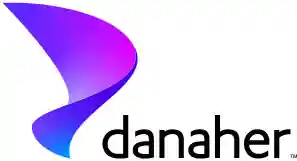Japan EdTech Market is projected to be worth USD 441.42 billion by 2033 and is anticipated to surge at a CAGR of 13.82%.
The constantly developing discipline of "edtech," or educational technology, uses technology to improve teaching and learning. It's a wide umbrella that includes a wide range of resources and technologies, such as the tablets and interactive whiteboards used in classrooms as well as the online learning platforms that have completely changed accessibility. Making education more interesting, accessible, and ultimately more successful for all students is the main goal of edtech. Teachers can tailor learning experiences to each student's unique learning style by incorporating technology into the classroom. They can also promote deeper understanding by giving access to a world of knowledge that goes beyond conventional textbooks. Additionally, edtech tools can foster critical thinking and teamwork by motivating students to collaborate and examine data from several angles.
Japan EdTech Market Driving Factors and Challenges
Driving Factors- The market is expanding since more students are choosing eBooks. Distributors, online booksellers, and tablet manufacturers have higher expectations for the computerized future of the book industry. By launching a cutting-edge electronic reading device that makes it easier for customers to purchase books at reasonable prices, Amazon has cemented its position as one of the major players in Japan. Also due to the convenience and simplicity that digital books provide, their popularity has grown. In addition, since many were confined to their homes during lockdowns, they spent their free time reading digital books instead of engaging in other activities like playing outdoor games.
Challenges- The edtech industry in Japan faces a number of obstacles. The digital divide is a significant problem that prevents equal learning opportunities due to differences in access to digital devices and high-speed internet. A further obstacle is the old education system's reluctance to adapt, since many organizations and teachers take their time implementing new technologies. Teachers also lack digital literacy, which makes it necessary for them to receive intensive training and assistance in order to successfully integrate edtech products. Concerns about data security and privacy are crucial as using online platforms more frequently increases the chance of cyberattacks. Finally, maintaining the efficacy and quality of edtech products is still a challenge that calls for ongoing assessment and development to satisfy a range of standards and educational demands.
Impact of COVID-19 on Japan EdTech Market
In Japan, the COVID-19 epidemic greatly sped up the adoption of edtech as colleges and institutions moved to online instruction. This change brought to light the need for creative teaching resources and a strong digital infrastructure. The industry saw tremendous expansion and development as a result of the rising demand for the services provided by businesses like Classi, Studysapuri, and Atama Plus. The epidemic highlighted the value of adaptable and easily accessible learning solutions, igniting long-term shifts in Japan's educational system and encouraging a deeper incorporation of technology into the classroom.
Japan EdTech Market Key Players:
The market study provides market data by competitive landscape, revenue analysis, market segments and detailed analysis of key market players such as Arcterus, Atama Plus, Classi, Khan Academy Japan, Mana.bo, Paiza, Progate, Quipper, RareJob, and Studysapuri, Others.
Japan EdTech Market Segmentation:
By Type: Based on the Type, Japan EdTech Market is segmented as; Hardware, Software, Content.
By Sector: Based on the Sector, Japan EdTech Market is segmented as; Preschool, K-12, Higher Education, Others.
By Deployment Mode: Based on the Deployment Mode, Japan EdTech Market is segmented as; Cloud Based, On Premises.
By End-Users: Based on the End-Users, Japan EdTech Market is segmented as; Individual Learners, Institutes, Enterprises.
By Region: This research also includes data for Hokkaido, Tohoku, Kanto, Chubu, Kinki Chugoku, Shikoku, Kyushu Okinawa.
This study also encompasses various drivers and restraining factors of this market for the forecast period. Various growth opportunities are also discussed in the report.






















